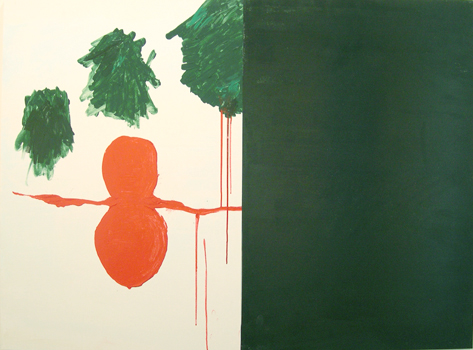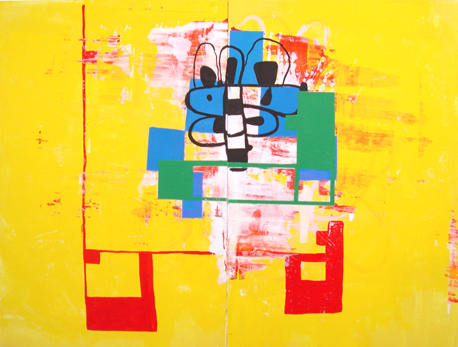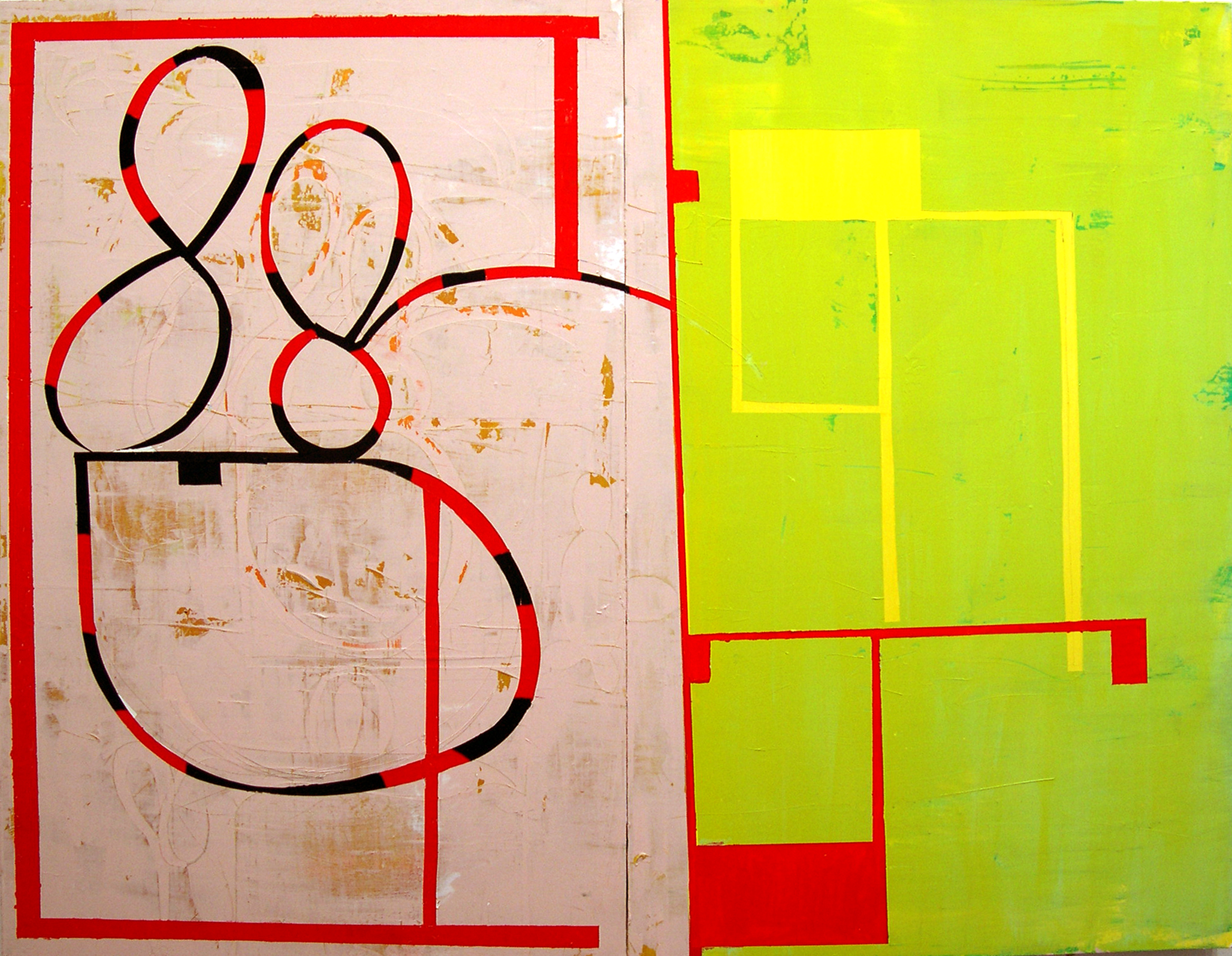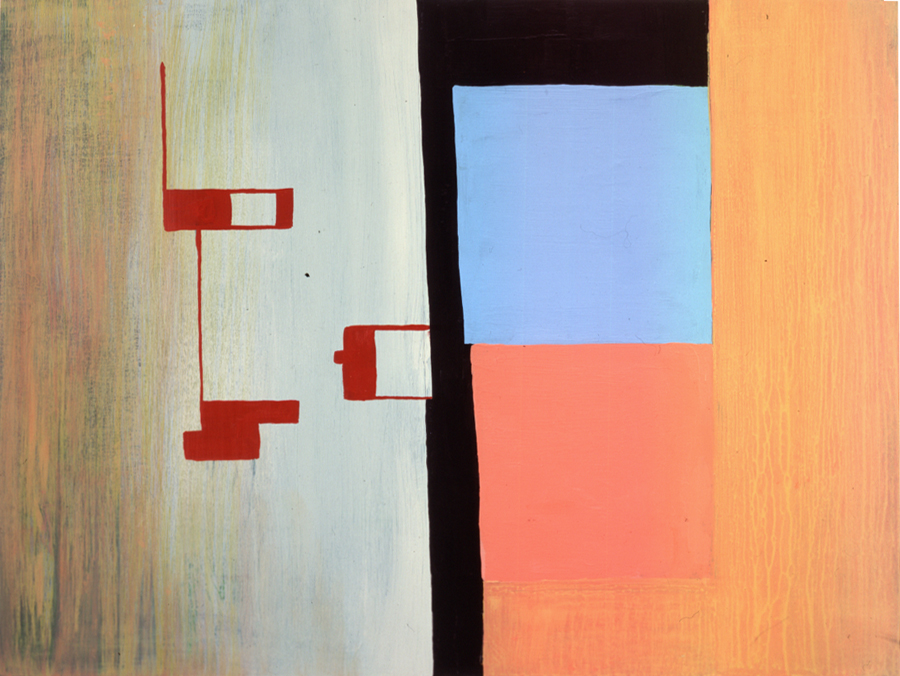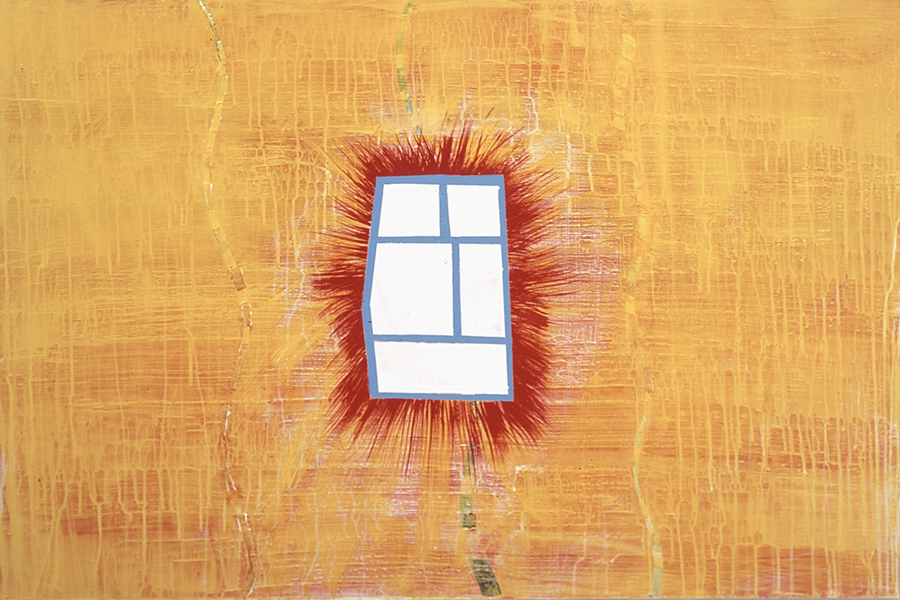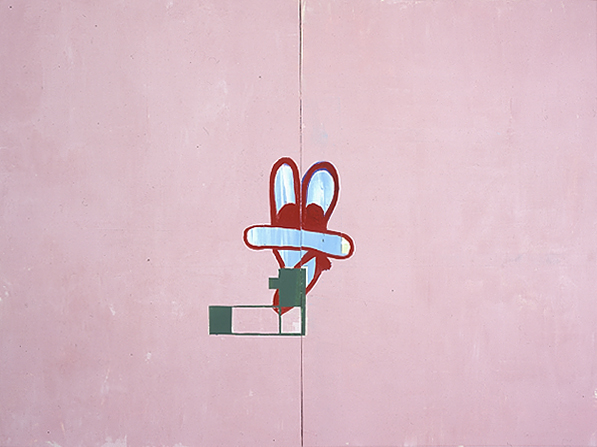Robert Sussman
Curated by Thomas Nozkwoski
April 22 – May 29, 2004
Robert Sussman was born in the Bronx, New York, in 1943. He studied at the Art Students League, the Brooklyn Museum Art School, New York University, and The Cooper Union. In the seventies he helped to establish the Anonymous Artists of America Cattle Ranch Inc., an artists' commune in Red Wing, Colorado. After returning to New York, his work was shown in numerous exhibitions in the U.S. and Canada. From 1985 to 1989 he was a member and president of the 55 Mercer Street Gallery, a cooperative gallery in New York's SoHo. During the late eighties and early nineties he taught at the Parsons School of Design. In 1990 he participated in the Triangle Artists Workshop in Rhinebeck, New York. Articles about his paintings have appeared in Ocular Magazine, 1981; Fredag (Danish Magazine for Literature, Culture and Politics) November 1987 by Christian Juul Jessen; Hrymfaxe Kunsttidsskrift (Danish Art Magazine), March 1995, article by Lars Aagaard-Mogensen.
Thomas Nozkowski is a painter who has had over sixty one-person shows of his work since 1979. His most recent exhibitions include a show of new work at the Max Protetch Gallery (November, 2003) and a twenty-five year survey of his drawings at the New York Studio School (January 2003). He is represented in the collections of many museums including, The Addison Gallery of American Art, The Brooklyn Museum, The Corcoran Gallery of Art, The High Museum of Art, The Hirshhorn Museum and Sculpture Garden, The Metropolitan Museum of Art, The Museum of Modern Art, The Phillips Collection, and The San Francisco Museum of Modern Art, among others. He is a Guggenheim Fellow and has received the American Academy of Arts and Letters Award in Painting. He is Professor of Painting at the Mason Gross School of the Arts at Rutgers University.
ARTIST'S STATEMENT
I was most influenced by abstract expressionists, so I favor experience over conceptualization. The best thing a painting can do, for me, is to come up with something new visually, something that gives me a new way of looking at a thing. I like the idea that paintings can open eyes and change peoples' understanding of what they see. Not to be too grandiose about this, but I think the art of looking clearly, of seeing things afresh, is the part of art that we can actually use in our lives.
I think a good work of art can be felt physically as you look at it. You can imagine your body in the painting, or making the painting with your own hands, or feeling a texture and the temperature of a color.
The fact that people have made and enjoyed paintings for thirty thousand years speaks well for us and makes me feel optimistic when I paint - even when contemporary events seem to warrant only negativity.
Once I thought that making images of things was arrogant. Now I believe otherwise, that making pictures, of real and imagined objects, is the best thing in the world.
I like the atmosphere created by bright, high-keyed colors. For me, colors of equal luminance are read as joyful.
Flat frontal shapes evoke a sense of physical immediacy. These shapes play with "almost being." They are more-or-less rectilinear, more-or-less biomorphic, more-or-less something or other. "Almost" is a quality that is important to me, because it frees people to take that "almost" image into any area -- from mundane and obvious readings, to their most personal associations.
If I am interested in something in the world, I am interested in using it in my paintings. Not just art objects and images, but all the stuff we deal with in our lives can contribute meaningfully to making paintings. I also use a lot of imagery drawn from the natural sciences, architecture, typography, maps, games and, of course, from other artists.
I want to thank the CUE Art Foundation for this opportunity to show my paintings and Thomas Nozkowski for helping me put this exhibition together.
CURATOR'S STATEMENT
by Thomas Nozkowski
I imagined that the biggest problem facing me in putting together a show of Robert Sussman's work would be deciding how to sample a forty year long career in a way that illustrated its full range and depth. Whether to choose a snapshot of a moment or two, or a more measured sampling of all the work, well, that is a problem.
The decision turns out to be not too hard to make. Given both the constraints of space - we can include ten to twenty paintings here at the CUE Art Foundation Gallery - and the happy and successful paintings made over the last year or so in Sussman's studio, this ensemble of recent work will stand perfectly as the sign of a long and rich oeuvre.
"Happy" works: slightly unhinged, sweet but rowdy, good humored and more than a little self conscious - these paintings know you are looking at them. They are slightly dazed by their good luck to be out here today in a nice gallery and they are very pleased to do some tricks. This isn't just Paul Klee's famous "taking a line... for a walk," everything rambles around in these paintings. Shapes, textures, colors and compositions are hiking all over the place.
Their performance is a little scandalous, I think, in how they toy with so many of the images of modern painting. These are, in a certain sense, cartoons of abstraction, the Walter Lantz version of the sublime. Howard Finster dealing with Clement Greenberg instead of the New Testament.
Don't get me wrong: Sussman is a sophisticated painter and as knowledgeable about contemporary art as any artist I know. But I do think he has a very special take on art, slightly distanced and really quite amused by it. Microscopes and telescopes both make things look funny - it is only in normal range that we can lose our sense of humor.
Funny is pretty much small beer by itself, but conflate it with some intricate human system (like Formalism here or Democracy for Mark Twain) and you can get something very rich, indeed. The best humor gives us a double vision of ourselves, subverts our pretensions and, best of all, helps us see things new. Seeing things new is the goal. The joke on the joke is that these pictures turn out to be very good formally - yes - with their fabulously odd colors, complex shapes and fascinating compositions.
View CATALOGUE

